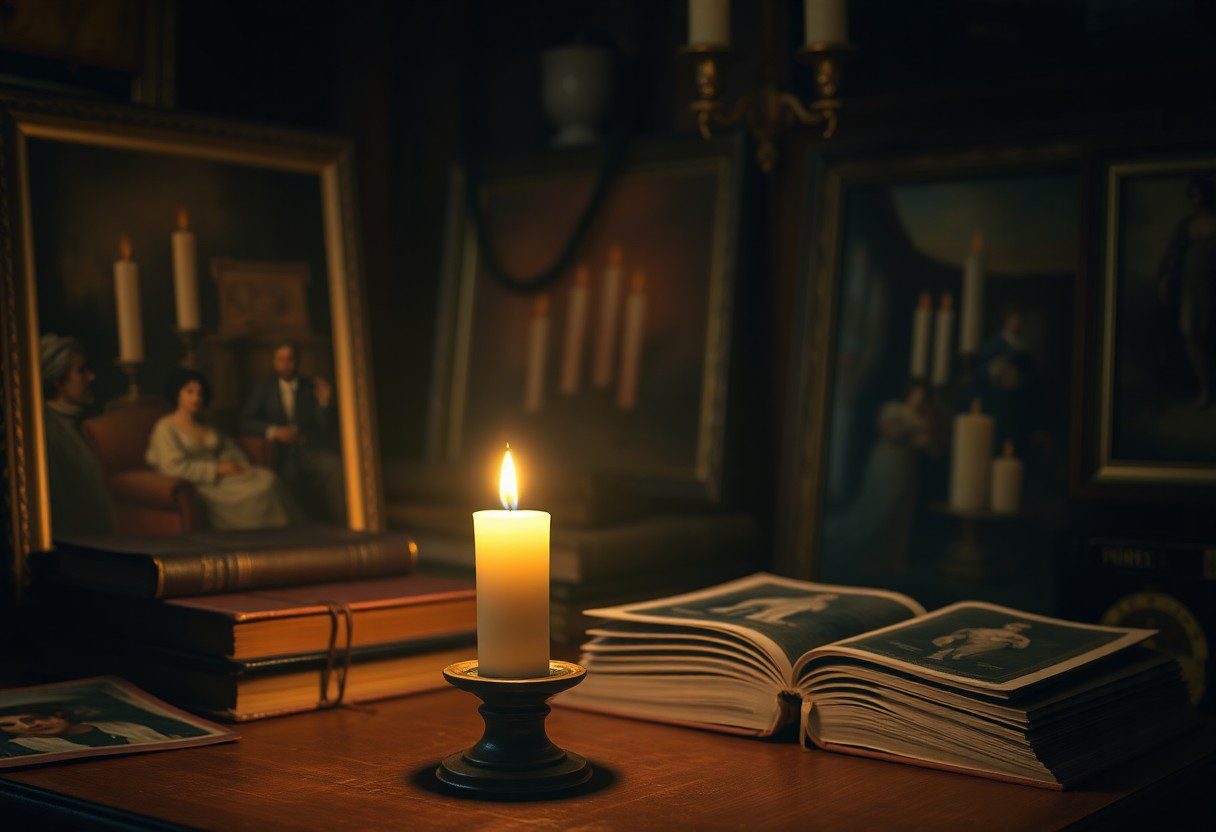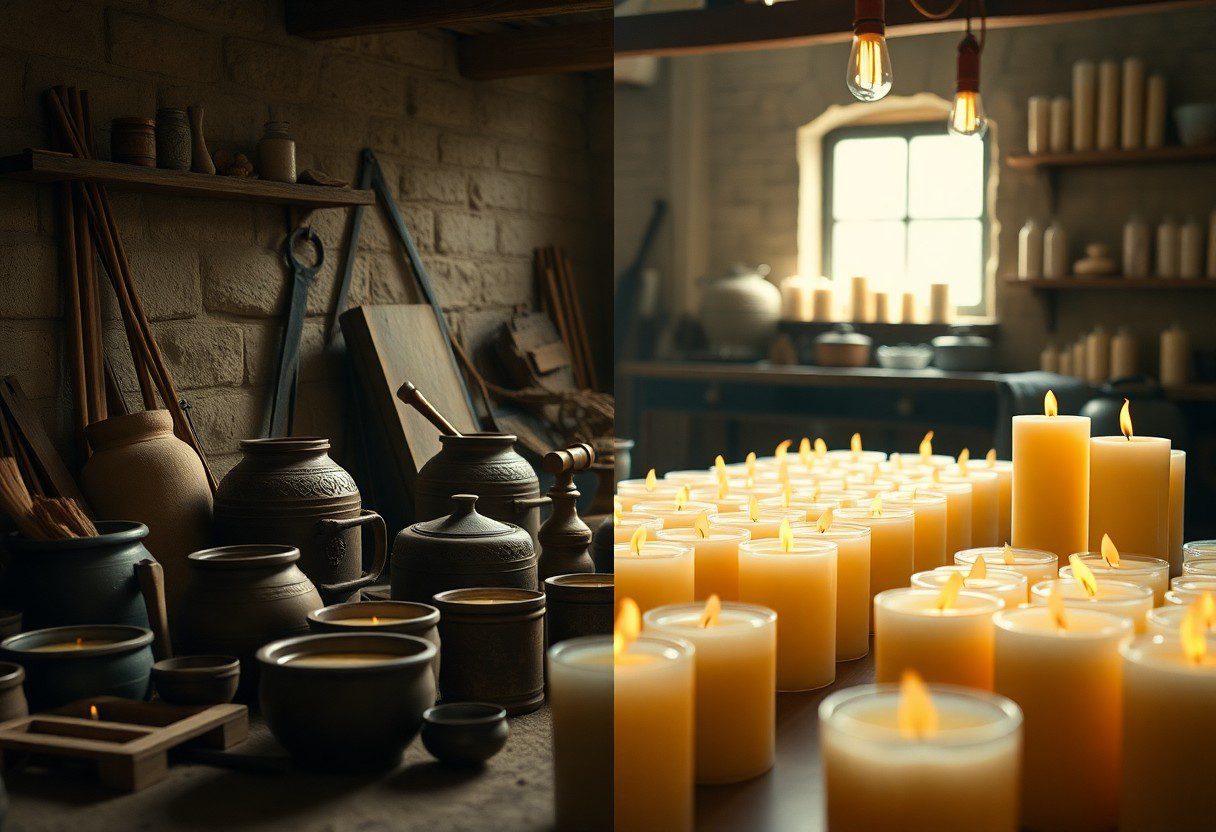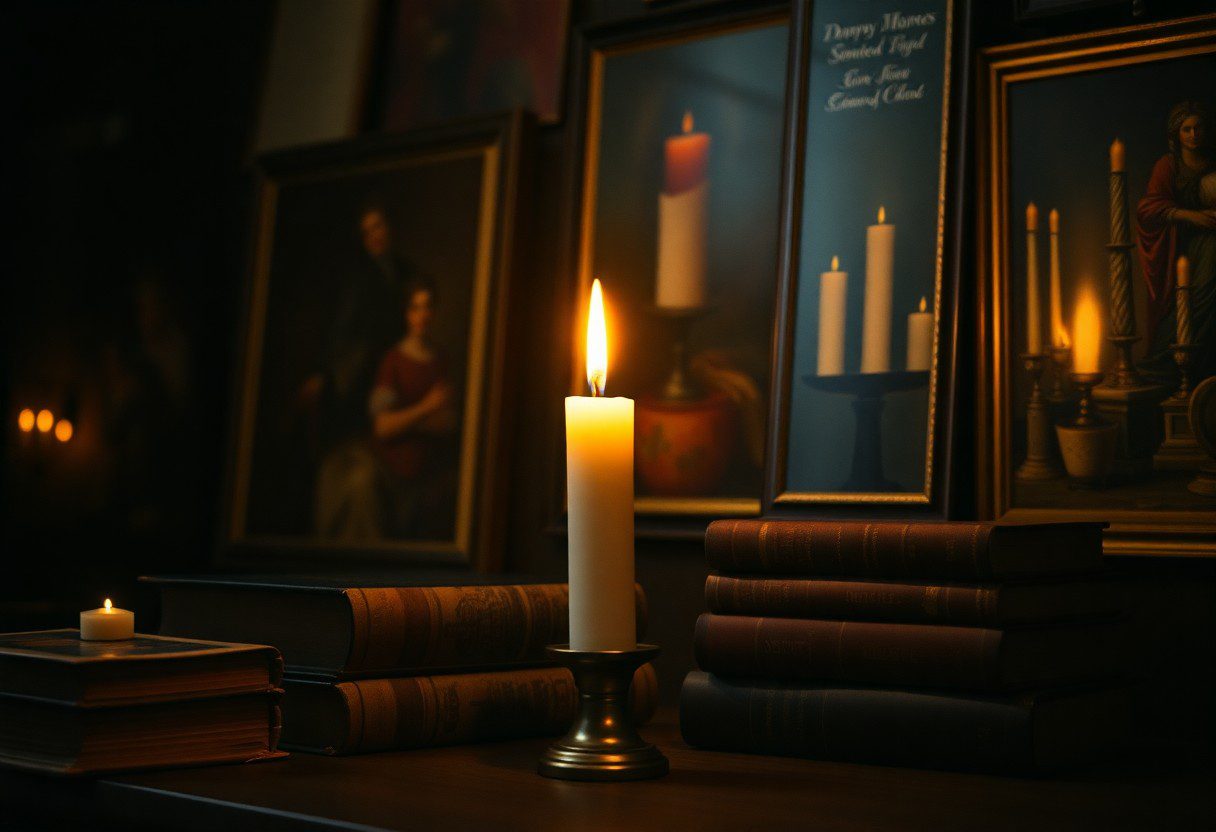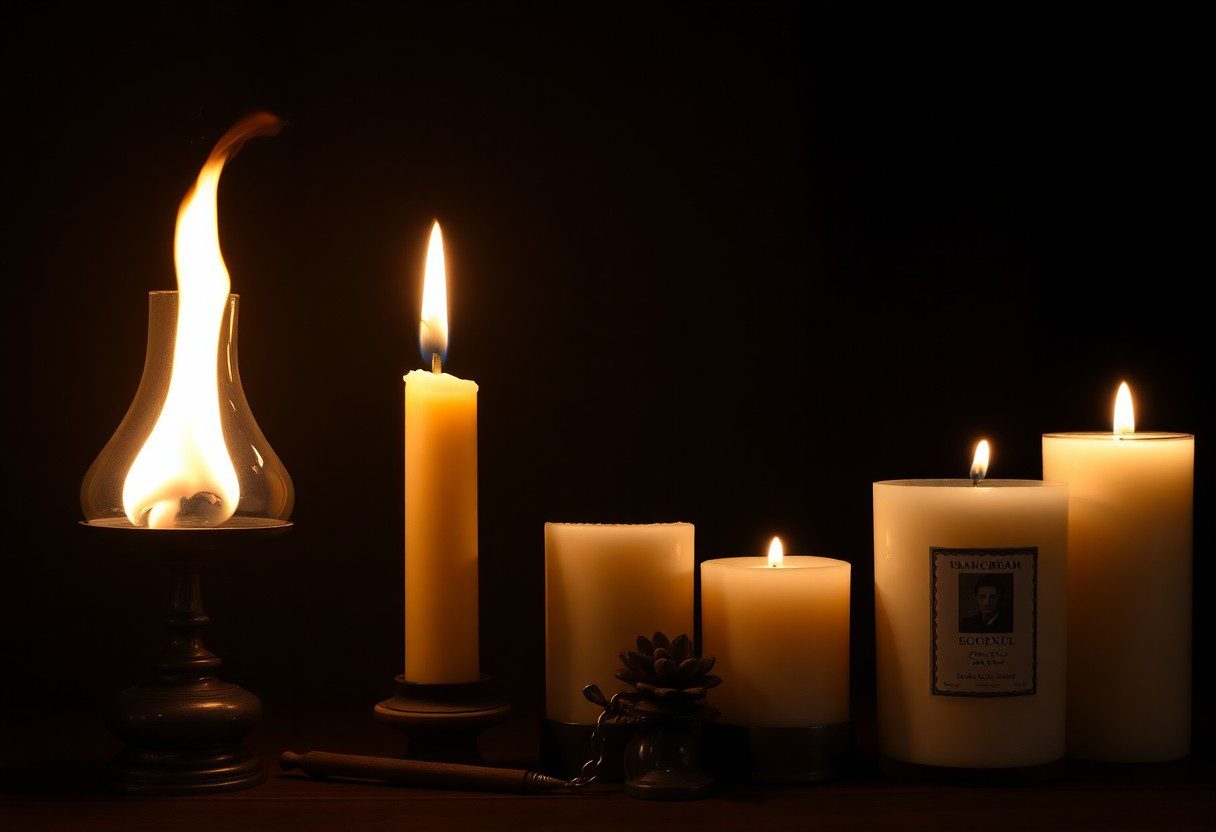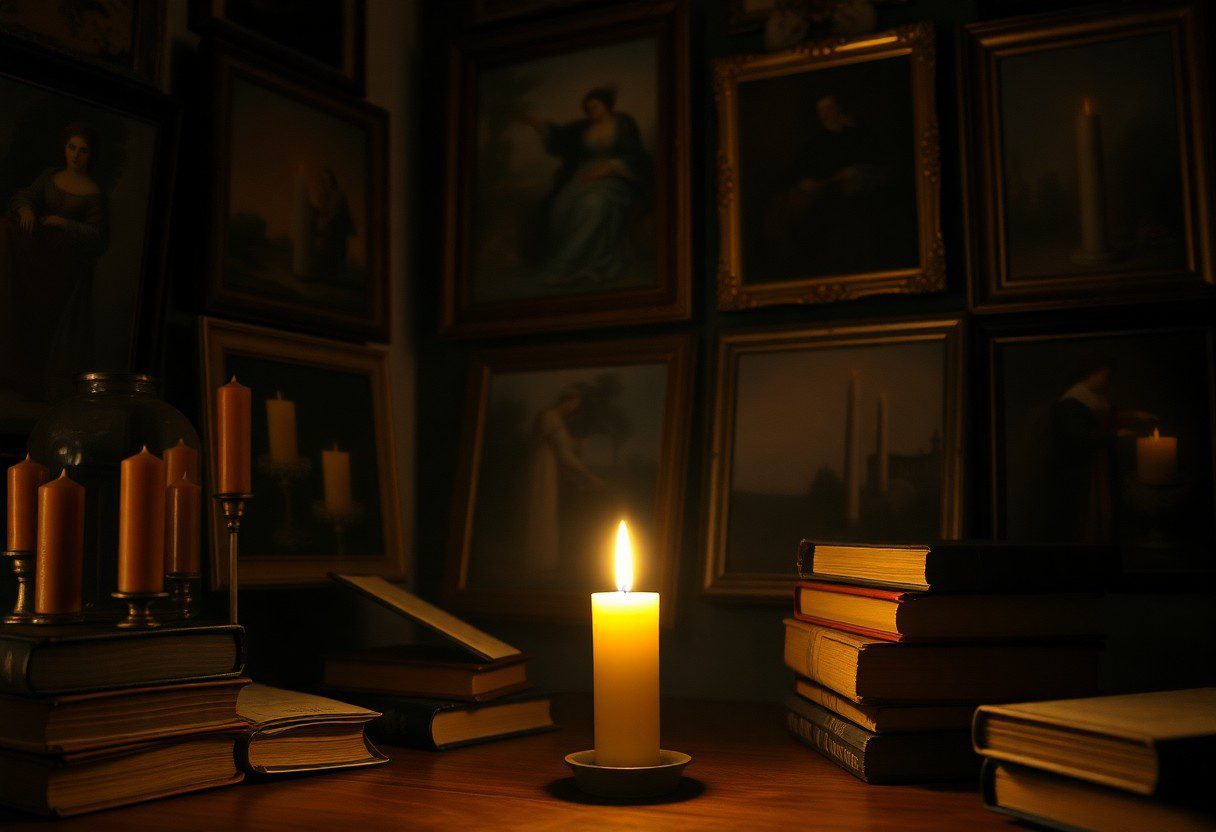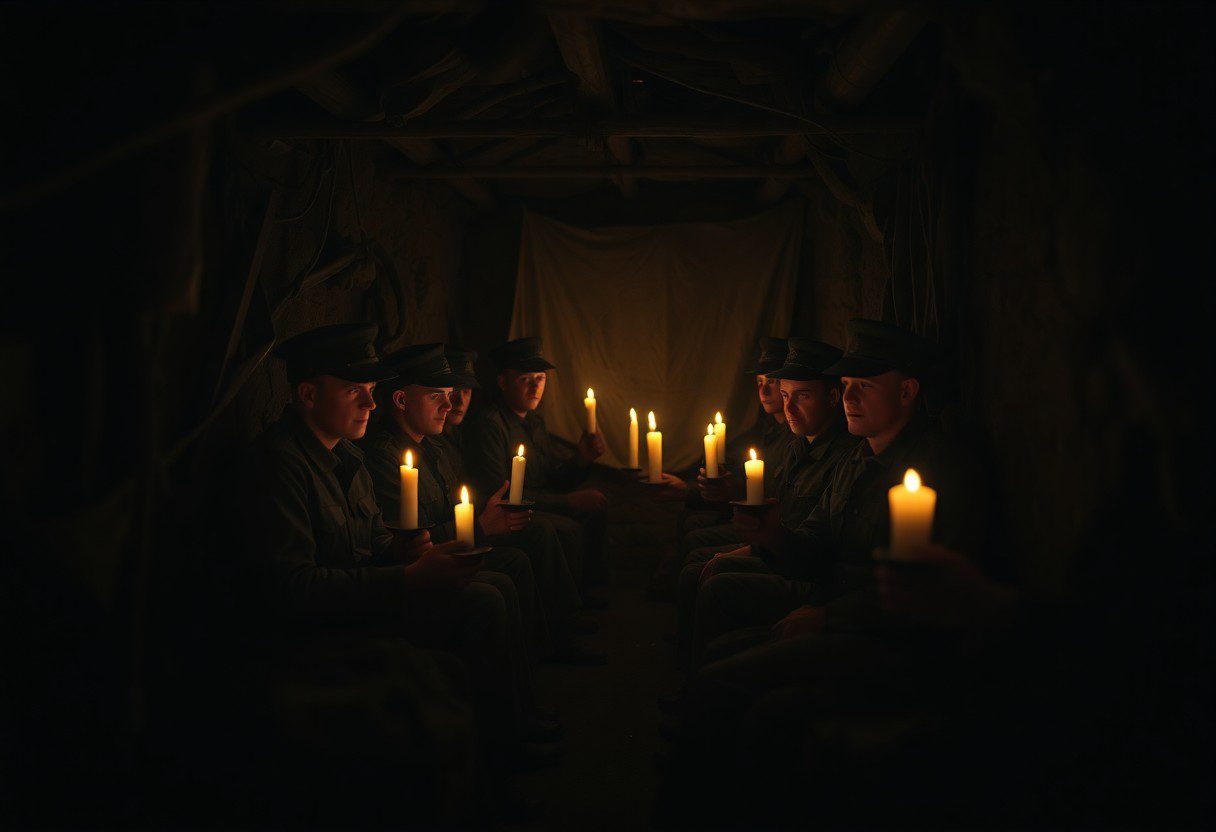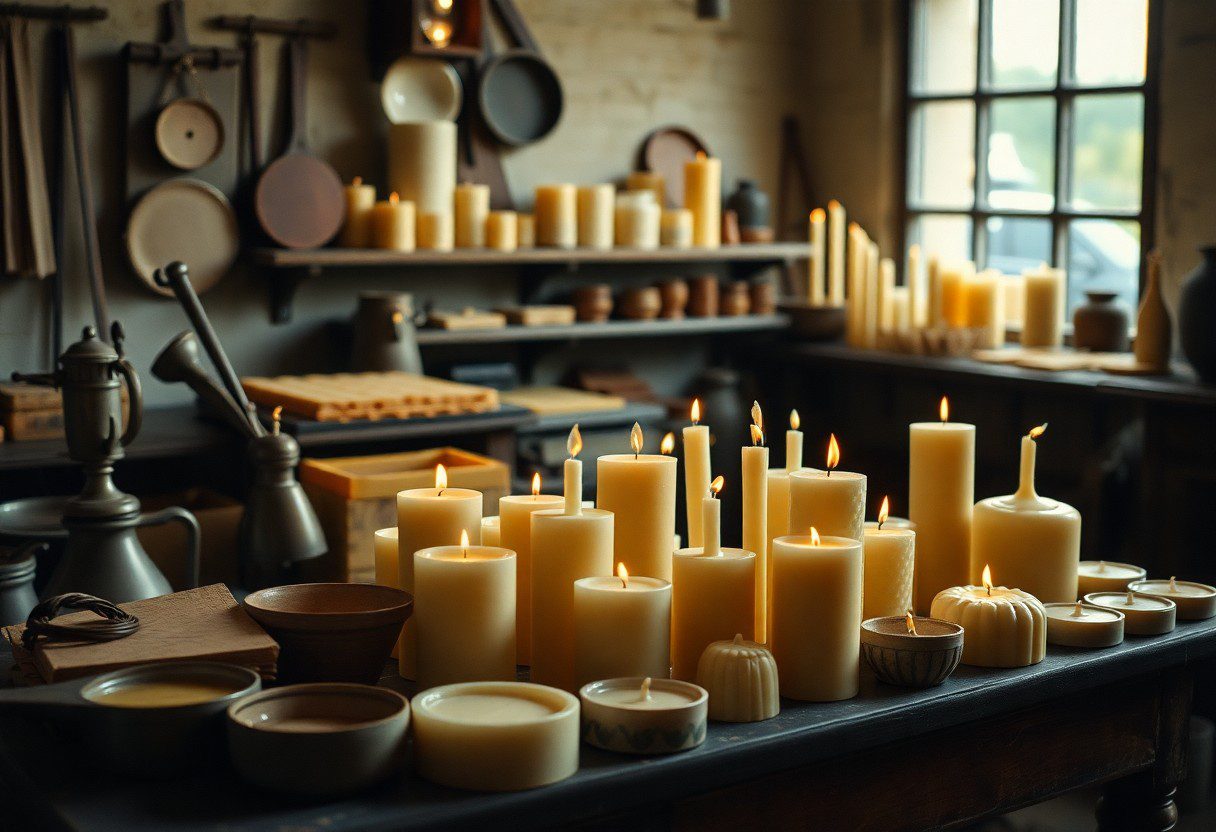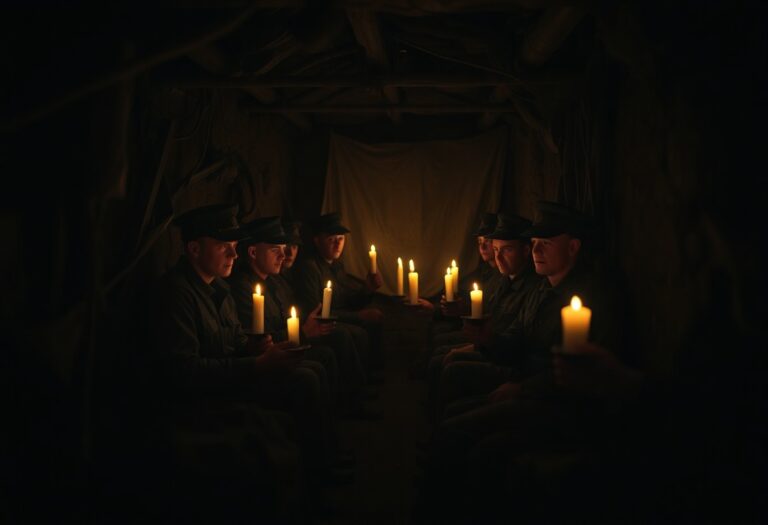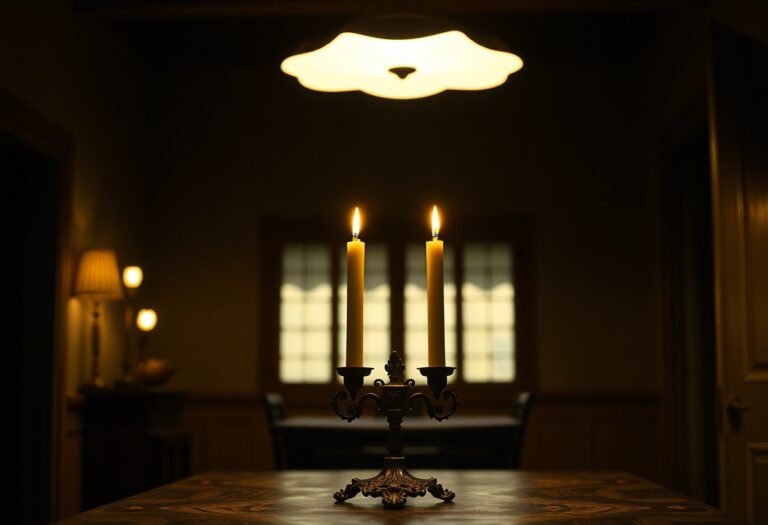Waxing Poetic – The Representation Of Candles In Art And Literature Through The Ages
Many creations in art and literature have drawn deep inspiration from the humble candle, often symbolizing hope, transience, and illumination. As you explore the evolution of how candles have been depicted, you will uncover their role in shaping human emotion and experience throughout history. From the ethereal glow of candlelight in classic paintings to the poignant symbolism in poetry, understanding these representations can enrich your appreciation of both visual and literary art. Join us as you investigate into the fascinating relationship between candles and creativity through the ages.
Historical Context of Candles in Art
Before exploring the rich tapestry of candle representation in art and literature, it is crucial to understand the historical context surrounding their use. Candles have served not merely as sources of light but as potent symbols representing various aspects of human experience, from the sacred to the everyday. In ancient civilizations, they played a significant role in rituals, celebrations, and domestic life, shaping how artists and writers portrayed light and its multifaceted implications throughout the ages.
Candles in Ancient Civilizations
For many ancient societies, candles were crucial not just for illumination but also for their spiritual significance. The Egyptians, for instance, used rush lights made from reeds soaked in animal fat, which were often placed in temples to honor the gods. In the Greco-Roman world, candles made from beeswax or tallow were frequently associated with religious ceremonies and public gatherings, illustrating your ancestors’ understanding of light as a divine element that connects humans with the universe. This link between light, rituals, and artistic representation would be echoed in various forms throughout the history of Western art.
The Role of Candles in Medieval and Renaissance Art
On the other hand, medieval and Renaissance artists began to explore the symbolic meanings of candles more profoundly. The use of candles in church settings and private devotional practices brought further depth to artistic interpretations. As you research into this era, you will discover how candles illuminated sacred spaces, guiding the faithful and evoking feelings of reverence and contemplation. Artists capitalized on this symbolism; lit candles frequently appeared in paintings as representations of faith, hope, and the divine.
Contextually, the connection between candles and the human experience expanded during the Medieval and Renaissance periods. As art transitioned from primarily religious themes to encompass everyday life, candles remained a strong motif, adapting their symbolism to fit the context of daily existence. You may notice that artists deployed candles to signify the fragility of life and the passage of time, often capturing intimate moments of reflection. This intricate interplay between light, life, and artistry enables you to appreciate the candles depicted in various artworks, resonating with your interpretations of faith, mortality, and the warmth of human connection.
Symbolism of Candles in Literature
Assuming you investigate into the rich realm of literature, you will discover that candles have held profound symbolism across various texts. They frequently serve as illuminating metaphors that transcend mere wax and wick, invoking themes of hope, purity, and the fragility of existence. This symbolism has been explored deeply in the arts, evident in exhibitions like Waxing Poetic, where the interplay of light and shadow dances through the narratives formed by artists and writers alike. These illuminating figures often mirror the human condition, representing the transient nature of life itself, and giving readers a lens through which to reflect on their own experiences.
Candles as Metaphors for Life and Death
Against the backdrop of various literary themes, candles often embody the duality of life and death. Their flames flicker, signifying the fleeting moments of living, while a candle’s extinguished wick raises questions of mortality and the inevitable end we all must face. Love and loss can be brilliantly captured through the metaphor of a candle’s flicker, reminding you that warmth and solace can exist alongside sorrow. In this way, the candle serves not just as a passive object, but as an active participant in the story of existence, illuminating the intertwined nature of joy and grief.
The Duality of Light and Darkness in Poetry
Beside the imperative reflections on life and death, candles serve as potent symbols of light and darkness in poetry. Poets often use candlelight to navigate the intricate relationship between enlightenment and ignorance, security and fear. In verse, a candle can act as a beacon of optimism amid despair, reflecting the struggle for understanding within the human experience. As the light from a candle can dispel darkness, so too does knowledge push against ignorance, creating a tapestry of contrasting emotions woven into the fabric of literary works.
Metaphors abound in poetry that echoes this duality, exploring how light represents hope and clarity, while darkness embodies confusion and despair. The flickering flame can symbolize a glimmer of optimism that persists even in times of great adversity, demonstrating resilience. It’s through these poignant contrasts that writers invite you to engage with your emotions, urging you to reflect on personal struggles and triumphs. The dance between light and darkness within poetry not only enhances the aesthetic quality of literature but also enriches your understanding of the human experience.
The Aesthetic Appeal of Candles in Visual Art
The representation of candles in visual art has always evoked deep emotions and created striking visual narratives. As you investigate into this enchanting subject, you’ll find that candles are more than mere objects; they encapsulate themes of illumination, transient beauty, and the delicate interplay between light and shadow. In various artistic movements, the inclusion of candles serves a dual purpose—both as an aesthetic element and as a symbol that conveys a story. You can appreciate how artists through the ages have harnessed the warm glow of candlelight to enhance the sensory experience of their work, drawing you deeper into the scenes they create.
Candle Motifs in Still Life Paintings
Above all, the presence of candles in still life paintings reveals a fascinating dynamic between simplicity and complexity. Artists often incorporate candles alongside everyday objects, such as fruits, flowers, or books, to create a balanced composition that invites you to ponder the relationships between the items displayed. The flickering flame can symbolize life itself, with its fleeting nature served as a poignant reminder of mortality. When you analyze these compositions, you’ll notice how the candles are used to direct your focus and illuminate specific aspects of the broader scene, enhancing both depth and texture.
The Influence of Impressionism and Modern Art
Motifs of candlelight continued to evolve with the onset of Impressionism, where artists began to emphasize the effects of light and atmosphere in their work. You may find this style refreshing, as it captures the dance of light from candles in a way that captures ephemeral moments in time. This approach allows for a more visceral interpretation of the sensory experience associated with candles, as seen in works by artists like Claude Monet or Edgar Degas. With Modern Art’s shift towards abstraction and expression, symbols like candles transformed further, representing not just illumination but also introspective themes of solitude and existence.
The exploration of candle motifs in both Impressionism and Modern Art invites you to engage with art on a deeper level. The dynamic interplay of light and shadow, coupled with the emotional resonance of candles, creates a captivating experience. You’ll find that artists use candlelight not just for illumination, but as a powerful symbol of introspection, capturing the fleeting nature of moments as they become intertwined with personal and universal narratives. These themes resonate with your own experiences of reflection, allowing you to connect with the artwork beyond the visual spectacle.
Candles in Religious and Spiritual Contexts
Once again, the representation of candles shifts to a deeply significant role in religious and spiritual contexts throughout history. In various cultures, candles symbolize purification and illumination, serving as beacons that connect the earthly realm with the divine. From the flickering flames of votive candles in Christian churches to the oil lamps used in Hindu worship, these light sources are integral to rituals that seek the favor of higher powers. You can explore deeper insights into this cultural interplay through the work of Ahmad Karimi-Hakkak Iranica Heirloom: Persian Literature, where candles often signify the light of knowledge and faith amidst darkness.
Candles in Religious Rituals
Across various religious practices, candles serve as vital components in rituals aimed at invoking blessings or marking sacred occasions. In Judaism, the lighting of candles during Shabbat is a tradition that ushers in peace and divine presence into the home environment. Similarly, in Buddhism, candles are lit to symbolize the illumination of the mind and the dispelling of ignorance. This ritualistic use of light not only enhances the spiritual atmosphere but also reinforces a sense of community among participants. The physical act of lighting a candle transforms simple moments into profound spiritual experiences, connecting you with centuries of tradition.
The Spiritual Significance of Candlelight
Before delving into the philosophy surrounding candles, it’s important to understand that candlelight carries a weight of emotional and spiritual significance. In many traditions, the flame represents hope, divine guidance, and transformation. The act of lighting a candle can be a form of meditation or prayer, creating a moment of stillness that allows you to reflect inwardly while communing with the broader universe. The glow of a candle often invites peace, making it a powerful tool for those seeking solace or clarity in tumultuous times.
Candles have the remarkable ability to transform spaces and moods. Their soft, flickering light evokes a sense of tranquility, encouraging you to pause and appreciate the present moment. In spiritual practices, the flame often symbolizes an inner journey towards enlightenment, urging you to confront the shadows in your life while welcoming the illuminating aspects of existence. Thus, the candle acts not only as a mere object of light, but as a profound vehicle for healing and self-discovery.
Contemporary Interpretations of Candles
Many artists and writers have embraced the symbolism of candles in their works, using them to convey a wide array of themes ranging from hope and remembrance to fragility and transformation. In modern literature, candles often represent the flickering nature of life and the inevitability of change. They serve as metaphors for guidance, illuminating paths in darkness, which resonates deeply with readers as they navigate their own journeys through life’s challenges. Furthermore, the act of lighting a candle can evoke intimacy and personal reflection, making it a favored choice in narratives that explore human connection and emotional depth.
Candles in Modern Literature
For many contemporary writers, the candle is a potent symbol of resilience and perseverance. You may find characters lighting candles as a ritual during times of grief, or perhaps as a way to celebrate pivotal moments in their lives. This act often signifies a pause, a moment to reflect on what has transpired or what is to come. In this context, the candle serves as a narrative device that invites you to consider the importance of memory and hope, effectively bridging the past and future in a single flickering flame.
The Impact of Candles in Contemporary Art
Behind the canvas, the allure of candles can be seen in the works of contemporary artists who use them as both subject and medium. Candles often represent transience and the impermanence of beauty, leading to striking visual contrasts that captivate you. Artists might utilize melting wax to illustrate the passage of time or the fragility of existence, crafting installations that encourage introspection and dialogue. Their presence in an artwork hints at themes of spirituality and reflection, urging you to investigate deeper into your own thoughts and feelings.
For instance, you might encounter installations where the candlelight plays a fundamental role in shaping the experience of the viewer. Artists often incorporate light and shadow to create dramatic effects, prompting you to engage with the work on multiple sensory levels. Whether through carefully orchestrated illumination or the poignant, fleeting beauty of a candle’s flame, these modern interpretations compel you to contemplate the interconnection between light and darkness in your own life, further amplifying the enduring resonance of candles in art today.
Cultural Variations in Candle Representation
Unlike many objects that remain static in meaning across civilizations, candles possess a vast array of representations that shift dramatically from culture to culture. When you probe into the historical significance of candles, you discover how these simple wax structures have come to symbolize everything from spiritual illumination to earthly connections. In various cultures, they embody purity, hope, and reflection, with each tradition lending its unique narrative to the flickering flame. By exploring these interpretations, you can gain a deeper understanding of how humanity has collectively navigated the complexities of existence through the metaphor of light.
Candles Across Different Cultures
Along your journey through different cultures, it’s fascinating to observe how candles serve a multitude of purposes. In East Asian cultures, for example, candles play an integral role in honoring ancestors during festivals like the Dussera and Diwali. The light of the candle signifies guidance and reverence, illuminating the path for spirits. Conversely, in Western traditions, candles often associate with celebrations of faith, such as the Advent wreath during Christmas, symbolizing the anticipation and joy of the season. You can see that across these varying traditions, candles not only illuminate spaces but also signify profound connections to the rituals and histories that define them.
The Role of Candles in Festivals and Celebrations
At major life events, the use of candles often becomes a central component, embodying a wealth of cultural symbolism. In many cultures, lighting candles at weddings serves to create an atmosphere of unity and warmth, representing the couple’s joining together as well as their individual flames. Birthdays, too, incorporate candles, with the act of blowing them out symbolizing the hopes and wishes for the future. You may find that as you participate in these celebrations, the candles evoke feelings of joy, reflection, and togetherness, cementing their role as a potent emblem of shared human experience across time and space.
But beyond their aesthetic appeal, candles in festivals carry meanings that reflect your personal and collective joys, sorrows, and hopes. The rituals surrounding candle lighting often invite introspection and connection, inviting you to contemplate not only the flickering flames but also the stories and memories they represent. Whether you are celebrating life’s milestones or honoring lost loved ones, candles have a way of capturing the essence of human experience in a way that is both profound and deeply meaningful.
To wrap up
Hence, as you explore the vast tapestry of art and literature, you will discover that candles have long served as powerful symbols of light, hope, and transience across various cultures and epochs. From the flickering flames depicted in Renaissance paintings to the elegant prose of modern literature, the candle’s presence often invites contemplation about the human experience. You may find that these creations inspire you to reflect on your own relationship with light and darkness, prompting deeper emotional engagement with the works you encounter.
Your journey through the representation of candles will not only enrich your understanding of artistic expression but also awaken a profound appreciation for the nuanced ways in which simple objects can carry heavy meanings. By recognizing the candle’s role as a metaphor for life’s fleeting moments and the illumination it offers, you can cultivate a stronger connection to the themes of memory, hope, and creativity that resonate through the ages. Let this exploration inspire you to see the familiar flicker of a candle in a new light, deepening your insights into both art and the human condition.
FAQ
Q: How have candles been symbolically represented in different art movements?
A: Candles have long served as powerful symbols in various art movements, often representing purity, enlightenment, and the transience of life. In the Baroque period, for instance, artists like Caravaggio used candles to illuminate their subjects dramatically, invoking themes of divinity and the human condition. In Romanticism, candles often appeared in works that highlighted emotional intensity, suggesting both comfort and melancholy. Moreover, contemporary art sometimes explores themes of sustainability and spirituality through candle imagery, reflecting modern societal concerns. Across these movements, candles continue to act as a versatile metaphor, enriching the visual and thematic depth of artworks.
Q: In literature, what roles do candles play in storytelling and character development?
A: Candles frequently play symbolic roles in literature, serving as motifs for illumination, hope, and vulnerability. For example, they are often used to create atmosphere, enhancing settings in works ranging from gothic novels to contemporary poetry. When characters light a candle, it may signify a moment of clarity or introspection, revealing their innermost thoughts and feelings. Conversely, the act of a candle burning down can symbolize the passage of time or impending fate, adding an emotional weight to narratives. Through these representations, authors utilize candles not just as objects, but as catalysts for character growth and plot progression.
Q: Can you provide examples of notable artworks and literary pieces that feature candles prominently?
A: Several notable artworks and literary pieces feature candles, showcasing their diverse symbolism. In art, Rembrandt’s “The Night Watch” utilizes candlelight to create dramatic contrasts and highlight noble figures within the scene. Similarly, in literature, Victor Hugo’s “Les Misérables” includes scenes with candles that illuminate the struggles of the characters, linking the light to themes of redemption and hope. Additionally, in poetry, Robert Frost’s “The Candle” reflects on the nature of existence through the metaphor of a burning candle, contemplating life’s fleeting moments. These examples demonstrate how candles have been intricately woven into various creative expressions, enriching both visual and literary narratives.

